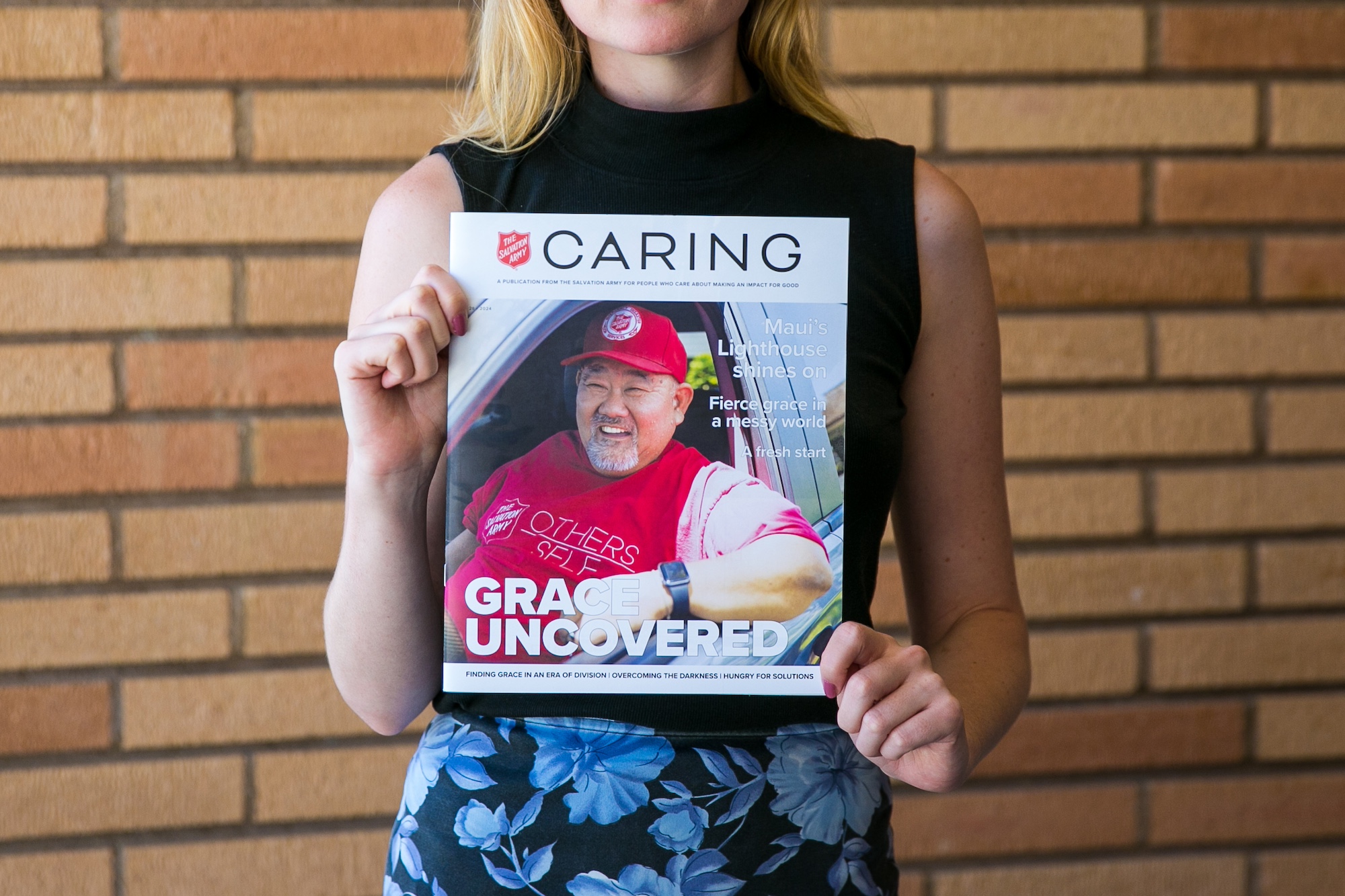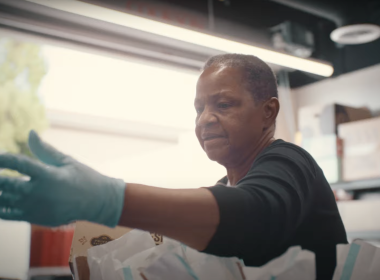Steve Bireley has guided the Kroc Centers’ development since their start in San Diego.
In November 2001, Steve Bireley became the first employee at The Salvation Army Ray and Joan Kroc Center in San Diego, nine months before it opened. He said he saw the center’s potential to create positive change in a community close to where he grew up.
Joan Kroc, widow of McDonald’s founder Ray Kroc, had donated $90 million to The Salvation Army in 1998 to build the center. Her dream was to enrich people’s lives and revitalize an underserved community. She would later bequeath The Salvation Army an additional $1.8 billion to build centers across the U.S.
The first Kroc Center Administrators, Lt. Colonels Cindy and Tim Foley, initially felt overwhelmed at the scope of the center—especially by the ice rink. Once they hired Bireley as Business Director, that concern was put to rest. Ice rinks were one of his specialties.
“We believe he’s a godsend to The Salvation Army, and continues [to be] to this day,” Tim Foley said in a 2022 episode of The Do Gooders Podcast, which discussed how the first center came into being.
Bireley came to The Salvation Army after just over six years with Disney Sports Enterprises as Director of Operations for Disney ICE. Earlier, he had managed the San Diego Ice Arena.
At the San Diego Kroc Center, he was Business Director/Director of Operations from 2001 to 2011, when he became Director of Operations and Coordinator for all the Kroc Centers in the Western U.S. For about 18 months, he also oversaw the Central Territory’s Kroc Centers in the Midwest.
“[Bireley] has been a ‘fixture’ in the Kroc world since the very beginning of Kroc Centers,” said Lt. Colonel Phil Lum, Western Territorial Secretary for Program. “He has been very instrumental in establishing our seven Kroc Centers and has helped each of them to maintain the highest quality of programs, mission and ministry.”
Kroc Centers across the Western Territory
Arizona:
Phoenix, May 2012
California:
San Diego, June 2002
San Francisco, June 2008
Suisun City, May 2012
Hawaii:
Ewa Beach, Oahu, February 2012
Idaho:
Coeur D’Alene, May 2009
Oregon:
Salem, September 2009
As of September 2024, Bireley has served The Salvation Army and its Kroc Centers for nearly 23 years. His goal has always been to support the centers as they played their part in fulfilling The Salvation Army mission.
“When Joan Kroc’s gift was announced, I felt that if all we end up with is a bunch of really nice community centers, we will have failed,” Bireley said. “The centers must be so much more and positively impact the greater Salvation Army.”
Caring spoke with Bireley about his journey with the Kroc Centers.
Caring Magazine: You had a great job. What led you to work for The Salvation Army?
Steve Bireley: Disney was great, and I had plans to work there forever. The decision to leave was really difficult. [The San Diego Kroc Center] opportunity came along, and it’s a couple of miles from where I grew up. I think back to how my life might have been different had that center been there. I came from not a poor family; we were fine. But I wasn’t going to summer camp, and I was a latchkey kid…This opportunity to go back home and do something that had real meaning was really significant. It became something I just had to do. I just had to do it.
The Salvation Army was my first nonprofit experience. I learned quickly that the Army has a huge heart. The people in it—the officers—want to focus on the ministry and the mission. The challenge was the operational efficiency and the finance side, and that was my contribution.
CM: What challenges did The Salvation Army face when opening that first center?
SB: Talk about building a ship at sea or a bridge while you’re crossing it. Everything we did was for the first time …We just figured it out. We had 200 staff that started the week before we opened, and a software system that was totally inadequate for its purpose and no time to train anybody on it. And we had June 19 as the absolute dedication day.
[Then Salvation Army] General Gowans was there, and Joan Kroc and Mister Rogers. And so we had the dedication, and it was blessed. And we had kids waiting to get on the ice and ready to jump in the pool. We announced it as officially open [and] we didn’t close again until Thanksgiving. There was no soft opening. And I can just remember every day walking up and down that facility wondering, how are we going to get through this? We did…We just kept showing up.CM: How have you seen neighborhoods transformed because of having a Kroc Center?
SB: When the San Diego Kroc Center opened, the strip malls up and down University Avenue had about a 15 percent occupancy rate. It was mostly boarded-up windows, lots of graffiti. The Kroc Center came. We got tagged a couple times early, but we always took pictures and painted over it, but before too long, it was like this island in that community—an island of safety.
Then we saw, by the time I left, about 80 or 85 percent occupancy for the businesses along the street. [The Kroc Center] definitely impacted it. And homeowners, when they listed their homes for sale, would list them as near or half a block from the Kroc Center. So there’s no question that it changed the community.
CM: Do you have a favorite Kroc Center?
SB: My favorite is whichever one I’m at. They each have their own unique characteristics and strengths. I think people talk about Kroc Centers in this generic term, and I think we need to change that. They have as many differences as they have things in common. They are reflective of the communities they reside in, and serve the community needs around that.
CM: What is a challenge facing the Kroc Centers?
SB: There are a lot of challenges in different areas. A current challenge many centers are struggling with is the minimum wage increases…In Hawaii, the minimum wage is going up 80 percent in a five-year period. That’s several million dollars of new expense over the next few years. Where do you get that?
I think the Kroc Centers are disproportionately impacted by what’s going on economically right now. Where you’re seeing the greatest inflation rates—labor and utilities—those are the two biggest things. That’s huge and we simply cannot pass that cost on to our members. So what do we have to do to generate that? And that’s kind of leading to a greater emphasis on fundraising and the social service side and the donor side of it. And I think we haven’t done that as well as we could.
CM: What is one of the best memories you have from your time with the Kroc Centers?
SB: Over the years, I’ve served as an interim center director for centers that were between directors. That’s an exhausting, but a very fulfilling thing to do. I most recently did that in Suisun City [California], and just to see that team develop and grow, that is one of the more gratifying experiences I’ve had in this role. That’s really what’s most gratifying to me, is seeing the people grow and change. If you look at the leadership team in San Diego, almost all of them started as part-time hourly [employees] years ago when I was there, and they worked their way up and they’re still there. That says a lot about the ministry and the mission.
CM: What will you take with you from your time with The Salvation Army and the Kroc Centers?
SB: Having a sense of purpose and value to what I do… Regardless of what I do going forward, I always want to feel like there’s some purpose, there’s some value, that I’m making some kind of impact. I want to leave the road I traveled better for my having traveled it, and I’m hoping that I’ve done that here, and that’s what I want to do going forward.
Do Good:
- Subscribe to the Do Gooders Podcast and tune in for good ideas. Hear conversations with those doing good and those with good ideas so you can turn inspiration into action and make an impact right where you are.












